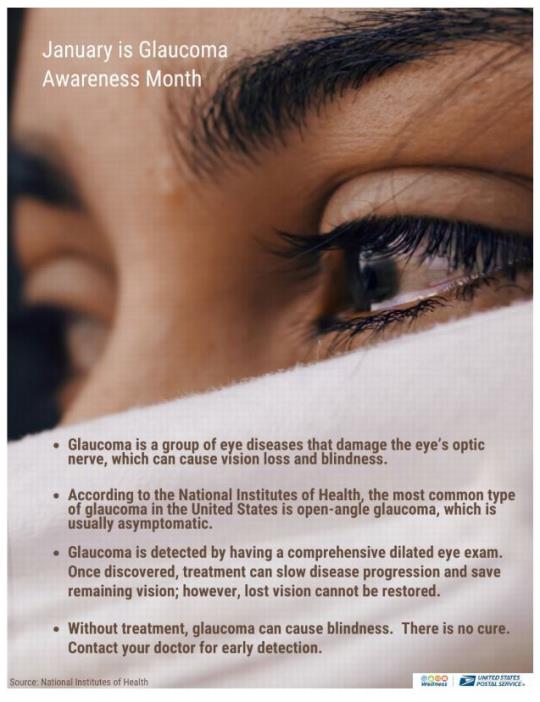January is Glaucoma Awareness Month, a time to learn more about the second leading cause of blindness worldwide.
Glaucoma is a group of eye diseases that damage the eye’s optic nerve, which can cause vision loss and blindness. According to the National Institutes of Health, the most common type of glaucoma in the United States is open-angle glaucoma, which is usually asymptomatic.
Anyone can get glaucoma, but certain groups are at higher risk, including people over age 60, African Americans over age 40, those with a family history of the disease, and individuals who have diabetes. Many people with glaucoma experience high eye pressure that develops slowly. Only 50 percent of these people know they have the condition.
Vision loss from glaucoma generally affects peripheral vision first (what you can see on the side when looking ahead) and central vision later (what you can see straight ahead).
Glaucoma is detected by having a comprehensive dilated eye exam. Once discovered, treatment can slow
disease progression and save remaining vision; however, lost vision cannot be restored. Glaucoma is treated with the following options:
n Eye drops,
n Medication,
n Laser treatment,
n Surgery, or
n A combination of treatments.
Without treatment, glaucoma can cause blindness. There is no cure, but early detection, treatment, and management are crucial measures to prevent damage and protect your vision.
For more information about glaucoma, visit the following sites:
n The Centers for Disease Control and Prevention at cdc.gov/visionhealth/resources/features/glaucoma-awareness.html.
n National Institutes of Health at nei.nih.gov/learn-about-eye-health/eye-conditions-and-diseases/glaucoma.
n USPS January Wellness Toolkit at liteblue.usps.gov/humanresources/benefits/health-wellness/wellness-partners-toolkits.shtml.
— Benefits and Wellness,
Human Resources, 1-14-21

